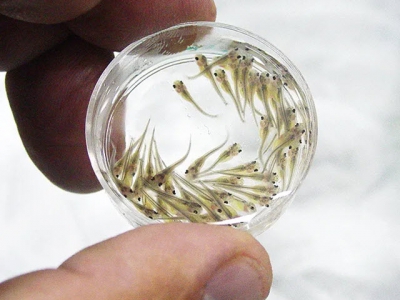The pros and cons of crossbreeding and hybridisation in aquaculture
Heterosis, the well-known concept of “hybrid vigour”, has been utilised to improve fitness-related traits – like growth, fecundity and disease resistance
 Concerns over tilapia biodiversity
Concerns over tilapia biodiversity A new study has revealed the scale of hybridization taking place between native and introduced tilapia in Tanzania.
 New treatment strategy for amoebic gill disease could revolutionise parasitic treatment
New treatment strategy for amoebic gill disease could revolutionise parasitic treatment New treatment strategy for amoebic gill disease could revolutionise parasitic treatment in humans
 The aquatic chicken - tilapia genetics and their parallels with poultry
The aquatic chicken - tilapia genetics and their parallels with poultry When considering ongoing genetic improvement efforts in tilapia culture, comparisons with the development of the modern chicken industry often present themselve
 Common diseases of pangasius catfish farmed in Vietnam
Common diseases of pangasius catfish farmed in Vietnam The freshwater catfish (Pangasius hypophthalmus) is an indigenous fish species in high demand from global consumers.
 What's the optimum ozone level in RAS facilities?
What's the optimum ozone level in RAS facilities? Scientists have determined that salmon post-smolts tolerate similar levels of ozone in brackish water – which is increasingly used in RAS facilities
 Mozambique warns of red spot disease among fish
Mozambique warns of red spot disease among fish Mozambique’s fishery authorities say they are on high alert for a potential outbreak of red spot disease after a recent outbreak in neighbouring Malawi.
 Fears over feminising antioxidants in fish feeds
Fears over feminising antioxidants in fish feeds One of the world’s top tilapia hatcheries has traced a radical upturn in the proportion of female tilapia in their normally all-male stock back to changes
 eDNA to tackle flesh-eating salmon parasite
eDNA to tackle flesh-eating salmon parasite A project that uses environmental DNA (eDNA) monitoring to alert salmon farmers to the presence of the parasite Kudoa thyrsites has been awarded funding.
 Developing live bacterial vaccines by selecting resistance to antibacterials
Developing live bacterial vaccines by selecting resistance to antibacterials To control fish bacteria diseases, feeding infected fish with approved, antibiotic-medicated feed is a general practice.
 Development of Lactococcus garvieae autovaccine for Nile tilapia
Development of Lactococcus garvieae autovaccine for Nile tilapia The primary objective of this study was to develop a protective, oil-based, autogenous vaccine for the protection of tilapia on Lake Kariba
 Cermaq to trial closed-containment salmon farm
Cermaq to trial closed-containment salmon farm Plans to install a novel semi-closed salmon farm in Canada, which would prevent interactions between wild and farm raised salmon, have been unveiled
 Study shoots down sea louse laser
Study shoots down sea louse laser The efficacy of a laser-firing device that has been designed to reduce sea lice pressures on farmed salmon has been called into question by new research.
 How saline conditioning in post-smolts can help prevent winter ulcers
How saline conditioning in post-smolts can help prevent winter ulcers Smolt that have been kept in brackish water for two weeks in their hatcheries before being transferred to marine nets pens are less susceptible to skin ulcers
 How to improve broodstock selection
How to improve broodstock selection A device that can automatically choose which farmed fish should be retained for breeding purposes is currently under development.
 Fake plants have real benefits for farmed tilapia - Part 2
Fake plants have real benefits for farmed tilapia - Part 2 In conclusion, a poor environment in fish farming has deficiencies that can be improved by including proposed enrichments
 Fake plants have real benefits for farmed tilapia - Part 1
Fake plants have real benefits for farmed tilapia - Part 1 The introduction of artificial water plants into tilapia aquaculture can lead to significant improvements in fish welfare at minimal expense to the farmer.
 How can Norway defeat pancreatic disease in salmon? By detecting it faster
How can Norway defeat pancreatic disease in salmon? By detecting it faster Using technology created to identify human diseases like the novel coronavirus, Fish Farm Solutions of Poland is targeting its rapid diagnostic kits at seven
 AQUACULTURE FRONTIERS, PART 4: Tilapia and Catfish
AQUACULTURE FRONTIERS, PART 4: Tilapia and Catfish Freshwater aquaculture is being rapidly disrupted by changes in technology, finance, regulation, as well as feed and biotech innovation
 Tilapia lake virus resistance breakthrough announced
Tilapia lake virus resistance breakthrough announced Certain tilapia families have been shown to be completely resistant to tilapia lake virus (TiLV), offering hope that breeding programmes can combat one
